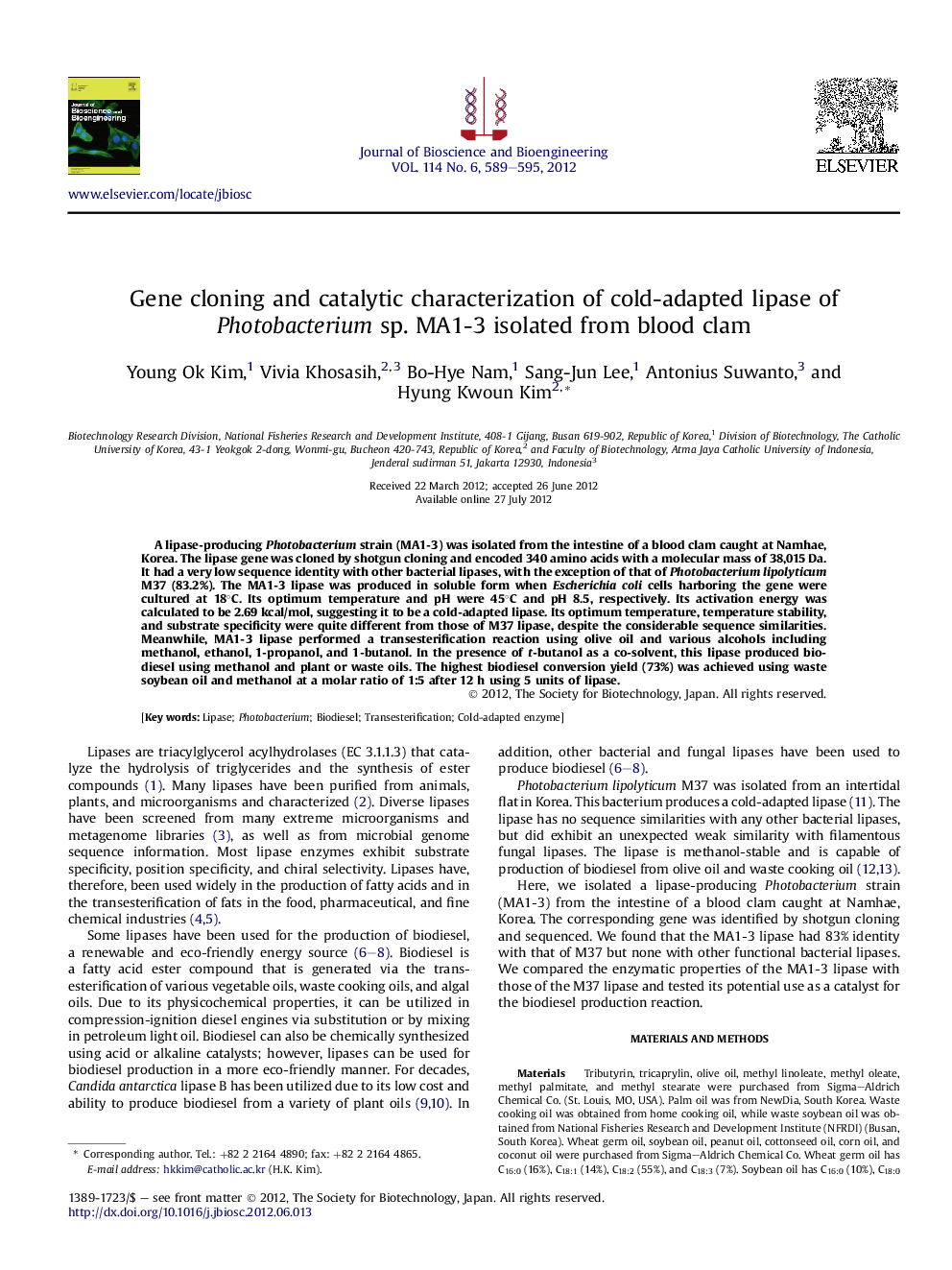| کد مقاله | کد نشریه | سال انتشار | مقاله انگلیسی | نسخه تمام متن |
|---|---|---|---|---|
| 21031 | 43203 | 2012 | 7 صفحه PDF | دانلود رایگان |

A lipase-producing Photobacterium strain (MA1-3) was isolated from the intestine of a blood clam caught at Namhae, Korea. The lipase gene was cloned by shotgun cloning and encoded 340 amino acids with a molecular mass of 38,015 Da. It had a very low sequence identity with other bacterial lipases, with the exception of that of Photobacterium lipolyticum M37 (83.2%). The MA1-3 lipase was produced in soluble form when Escherichia coli cells harboring the gene were cultured at 18°C. Its optimum temperature and pH were 45°C and pH 8.5, respectively. Its activation energy was calculated to be 2.69 kcal/mol, suggesting it to be a cold-adapted lipase. Its optimum temperature, temperature stability, and substrate specificity were quite different from those of M37 lipase, despite the considerable sequence similarities. Meanwhile, MA1-3 lipase performed a transesterification reaction using olive oil and various alcohols including methanol, ethanol, 1-propanol, and 1-butanol. In the presence of t-butanol as a co-solvent, this lipase produced biodiesel using methanol and plant or waste oils. The highest biodiesel conversion yield (73%) was achieved using waste soybean oil and methanol at a molar ratio of 1:5 after 12 h using 5 units of lipase.
Journal: Journal of Bioscience and Bioengineering - Volume 114, Issue 6, December 2012, Pages 589–595